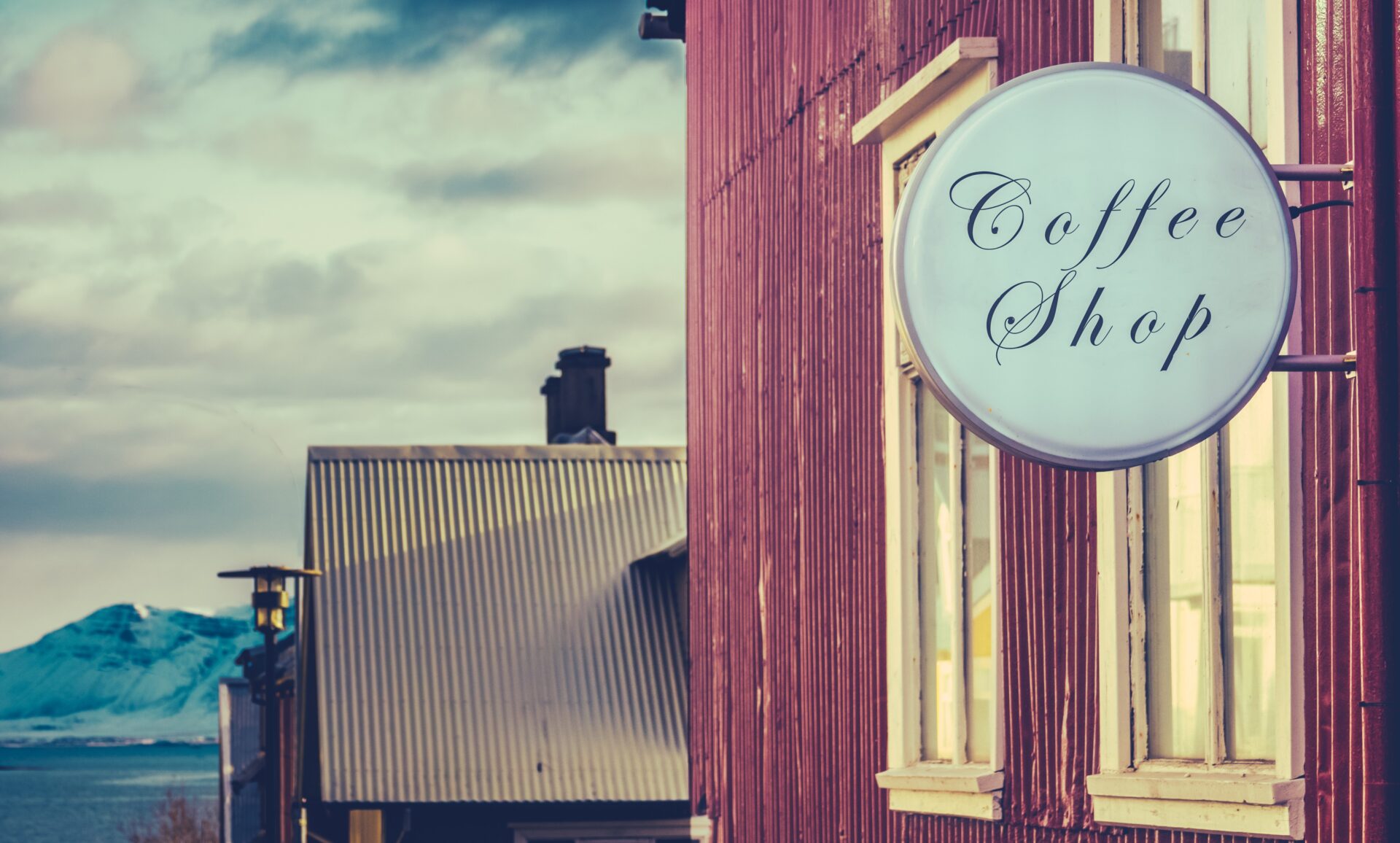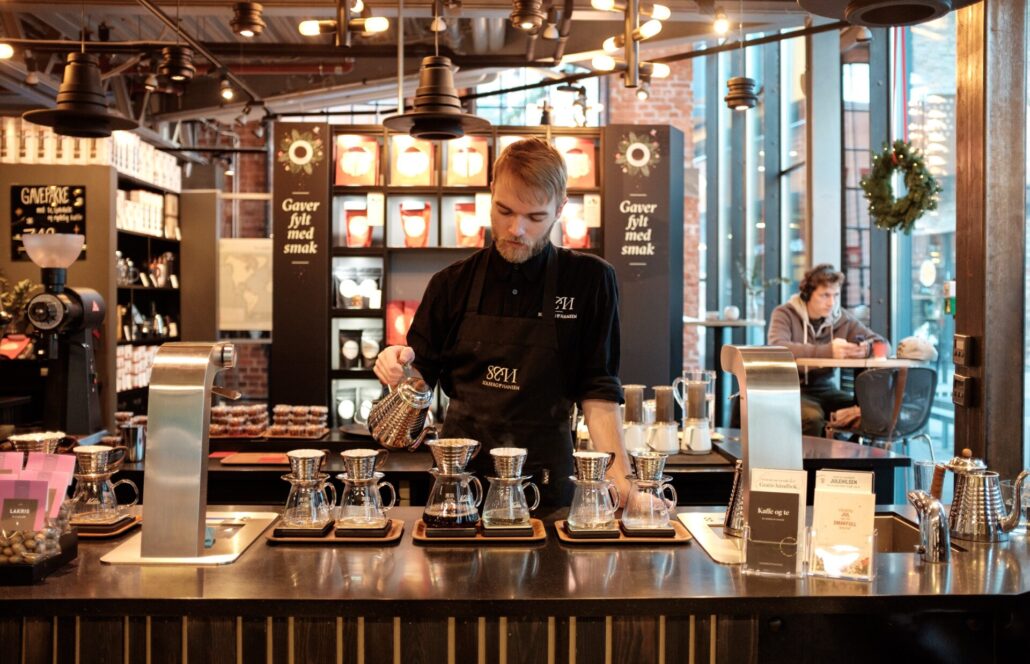Coffee has become so popular in Northern Europe that most Scandinavian countries consider it their national drink. There is a misconception that the biggest coffee-drinker countries are in the South of Europe, such as Italy and France, but it is not true
Quite surprisingly, 5 out of the 10 first places in the research into Top Coffee-Consuming Countries belong to Nordic countries. According to statistics, the first place belongs to Finland, and the average number of coffee cups consumed by Finnish people is 12. Finns have a coffee consumption rate of over 10 kg per person. Iceland is in second place, and it is believed that it has something to do with the freezing weather this country is famous for. In Norway and Denmark a drip coffee maker is used to make a brewed or filtered drink. Over half of the population in Sweden drink coffee with their breakfast – a local cinnamon bun, say, or a piece of chocolate – as well as during the day and working hours.
The one thing that connects them all is that they prefer the locally produced coffee: Evergood Kaffe in Norway, Paulig in Finland, Merrild in Denmark and Iceland, while in Sweden the two most popular brands are Gevalia and Löfberg. Each country is known for its local coffee chains and independent coffee shops. Espresso house is the largest chain store, which has opened over 190 outlets in Sweden, Norway, Denmark and Finland. Other leading coffee chains are the Norwegian Kaffebrenneriet, Robert’s Coffee from Finland, the Icelandic Te & Kaffi, and Joe & The Juice from Denmark. (Coffee Business Intelligence, 2019)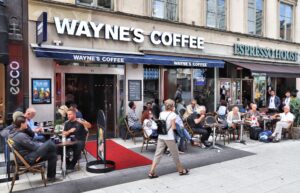
Which trends offer opportunities in the Scandinavian market?
Scandinavian imports are directed towards high-quality coffees in general. Norway, Sweden and Denmark are regarded as important players in the global specialty coffee market, which continues to grow in the region. Sales of coffee with sustainability certifications show continuous growth in Scandinavia, while the market for organic coffee in the region provides interesting opportunities for coffee exporters. Scandinavian coffee imports are relatively low in volume but directed towards high quality. High-quality coffees have been the main focus in the Scandinavian market. Norway, for instance, is where the Specialty Coffee Association started in Europe. Scandinavian countries rank high when it comes to organic food sales and consumption in Europe. The interest in organic coffee follows the general trend of a growing Scandinavian market for organic products. (Cbi Ministry of Foreign Affairs, 2021)
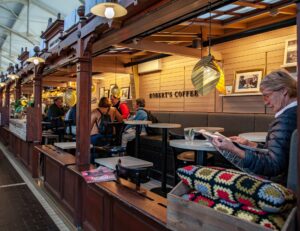
Coffee market in Scandinavia in 2020/2021
Denmark and Norway, like many European countries, imposed national lockdowns and non-essential businesses were closed in 2020, including coffee shops; Sweden, on the other hand, remained open until December 2020. Nevertheless, they too felt the consequences like everybody else.
In Scandinavian countries 94% of people consume coffee at least once a week, but during this pandemic the proportion who visited coffee shops at least once a month has fallen from 77% to 47% year-on-year. Denmark and Norway visited Starbucks the most, while Swedish consumers stayed loyal to the domestic brand Espresso House.
World Coffee Portal predicts that the total Scandinavian branded coffee shop market will return to pre-pandemic levels by 2024, growing at 1.4% CAGR over the next five years. Denmark is expected to lead the region’s growth with a projected 3.2% CAGR over the next five years, followed by Norway at 1.5% CAGR. The recovery will be slowest in Sweden, which experienced the largest contraction in outlets, and is projected to grow at 0.9% CAGR. (World of Coffee Portal, 2021)
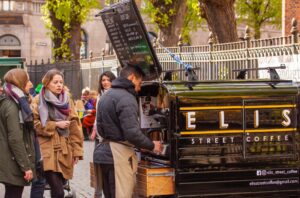
Scandinavian style of light roasting
There is a phrase that can be heard among coffee lovers – „Scandinavian style“, that not many of people know what it actually means. We are happy to share with you the amazing information we found out about this special matter.
Scandinavian style refers to their habit to roast the coffee a little less than usual. Scandinavians are roasting more lightly the green coffee in order to bring out the intrinsic flavors in each unique green coffee, rather than the flavors added by the process of a roast.
„Some of us do roast lighter than pretty much anywhere else,“ says The Coffee Collective’s Klaus Thomsen. „However, we do have a range from ultra-light to medium/dark. We generally just buy and roast coffees that excite us—that’s our philosophy. There are a few US roasteries now roasting light, but it’s very few.“
„There’s excess of choice in the States, which is off-putting for me—for us, we only have a very very limited selection. Right now we only have two Kenyan coffees and two Brazilian coffees, which is kind of the extreme of the ‘in season’ philosophy,“ said Tim Varney, roaster at Oslo’s Tim Wendleboe cafe. „A lot of people are against the lighter style of roasting, but I think they realize that they can push it a bit further and suddenly they’re exploring a whole new set of flavors.“ (Serious Seats, 2018)
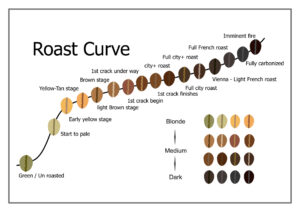
How come Scandinavians drink so much coffee?
In Nordic countries, any guest to your house will immediately be offered a cup of coffee, which can be perceived as both polite and a little bit pushy. Tiú dropar translated from Icelandic means “ten drops“, and it is a tiny cup of coffee designed specifically for somebody who is visiting, perhaps to drop something off, or going door to door. It can be perceived as both ”you are welcome“, or ”take your coffee and go“ if you are not familiar with the culture.
A couple of centuries ago Scandinavia, especially Finland, were very poor countries. To resolve the problem, they imposed higher taxes on alcohol and alcohol production, which made Scandinavians start looking for a new obsession, and this is where it all started. Religion influenced it quite a lot as well when a gathering after the service became more and more popular. Churches often provided coffee and cakes for their parishioners. Kirkekaffe, or “church coffee”, became an important part of Scandinavian culture and it definitely made the connection between the church and the people a lot stronger. (Verdict, 2017a)
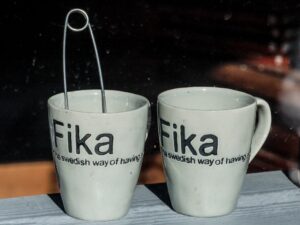
What is „fika“?
It’s a Swedish custom where people gather to drink coffee, eat sweet treats and chat. It is a similar practice to “aperitivo“ in Italy or going to the pub in England. Many Swedish companies have mandatory fika breaks where employees receive free hot drinks.
It originated from the word “kafi” (coffee), and it represents a time when you relax and take a break. Alingsås, a small town on the west coast of Sweden, proclaimed itself as the “Capital of Fika”. It is a town with the most cafés per capita in the country.
Matts Johansson, founder of the Da Matteo coffee chain in Gothenburg says, “Most Swedes have fika several times a day, whether it’s at the weekend or during the week. It’s about spending time with people, eating lovely homemade baked goods and drinking great coffee.” (Daily Scandinavian, 2016).
Traditional Scandinavian coffee
One of the oldest techniques of the Nordic region is adding egg to the coffee. They add the egg to the coffee to produce a “mild flavor and powerful caffeine kick,” that rids the beans of their bitter flavors. The process goes like this: they crack an egg and beat it until blended, then mix the egg into dry coffee grounds. The mixture is then put into a coffee pot and left to boil. Once boiled, it rests for 10 minutes. Then they would add a cup of cold water into the pot, allow it to settle for 10 minutes. After that, the coffee is ready to be served. The final product has a burnt sienna color and it is completely devoid of bitterness. (Eater, 2016)
Special Nordic (alcoholic) coffee recipe
There is another traditional Nordic recipe (more of a legend) on how to make a good alcoholic coffee, and we are revealing it to you here!
Grab yourself a cup, glass or mug, and place a coin inside. Pour coffee into the cup until you can no longer see the coin. Next, you find a white spirit of your choice – it is usually vodka, but nobody will judge you if you opt for another – and you pour that in until the coin appears again. (Verdict, 2017b)
Bibliography
Coffee Business Intelligence, 2019. Coffee, the Scandinavian National Drink. Retrieved May 15, 2021 from https://coffeebi.com/2019/01/09/coffee-the-scandinavian-national-drink/
Cbi Ministry of Foreign Affairs, 2021. The Scandinavian Market Potential for Coffee. Retrieved May 15, 2021 from https://www.cbi.eu/market-information/coffee/scandinavia/market-potential
World of Coffee Portal, 2021. Coffee Shop Market in Focus: Scandinavia. Retrieved May 15, 2021 from https://www.worldcoffeeportal.com/Latest/InsightAnalysis/2021/April/Coffee-shop-markets-in-focus-Scandinavia?dm_i=3VQO,1A9V9,72QO5N,4N15L,1
Serious Seats, 2018. All About Scandinavian Coffee. Retrieved May 15, 2021 from https://www.seriouseats.com/scandinavian-coffee-primer-all-about-nordic-coffee
Verdict, 2017a. World Coffee Day 2017: Why Do The Nordic Countries Drink The Most Coffee? Retrieved May 15, 2021 from https://www.verdict.co.uk/world-coffee-day-nordic-countries/
Daily Scandinavian, 2016. The Capital Of Fica. Retrieved May 15, 2021 from https://www.dailyscandinavian.com/the-capital-of-fika/
Eater, 2016. Why You Should Crack An Egg Into Your Coffee Grounds. Retrieved May 15, 2021 from https://www.eater.com/coffee-tea/2016/11/29/13769856/egg-coffee-scandinavian
Verdict, 2017b. World Coffee Day 2017: Why Do The Nordic Countries Drink The Most Coffee? Retrieved May 15, 2021 from https://www.verdict.co.uk/world-coffee-day-nordic-countries/
